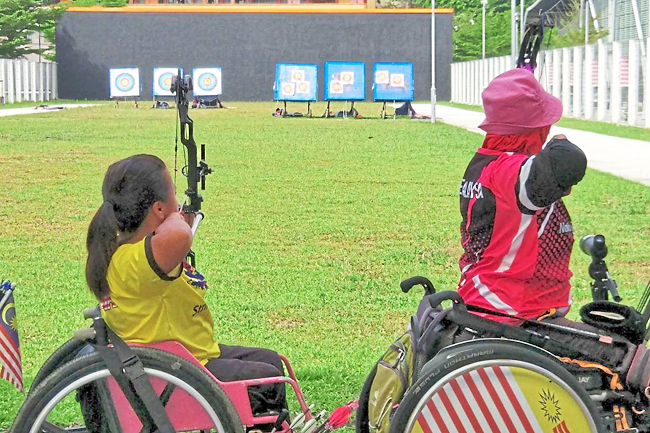ANN/THE STAR – Archery, like any other sports, celebrates diversity by welcoming participants from various backgrounds, including individuals with disabilities.
This inclusive sport provides an opportunity for disabled athletes, referred to as ‘paralympic archers’, to demonstrate their abilities and compete at both national and international levels.
“The disabled archers train for both the Olympic recurve bow and compound bow divisions,” said former Malaysian national coach Tan Peng Loon, who now serves as a technical advisor at a local archery pro shop. “Our national archers are quite capable and participate in tournaments alongside able-bodied athletes.”
According to Tan, para-archers train similarly to their able-bodied counterparts. A classifier from the National Archery Association consults with the athletes to ensure their eligibility.
“They undergo thorough scrutiny by the classifier to ensure authenticity and prevent fraud,” Tan said.
Once classified, approved archers join the para-archery team for training. “The nature of disabilities varies among the athletes, including amputees and those with paraplegia,” Tan said. He highlighted that wheelchair archers might retain core strength, whereas athletes paralysed below the waist must focus on different muscle groups to shoot their bows effectively.

“Archers who are paralysed train to use their shoulder and upper back muscles for drawing and releasing their bows,” he added.
Para-archery teams are divided into Olympic recurve bow and compound bow categories.
Modifications are made to the equipment to allow the archer to draw and release arrows effectively. These adaptations enable archers to achieve excellent results during training and competitions.
These athletes compete in the local para-circuit to establish rankings and select state archers for the national team during annual meets. Those who represent the country then compete internationally at the Paralympic Games.
“During competitions, an agent is appointed to each archer to record scores and retrieve arrows,” Tan said, adding that the agent is usually a volunteer from the team. Unlike their able-bodied counterparts, para-archers may face unique health challenges.
“They suffer from body sores due to prolonged wheelchair use and are prone to infections not typically seen in other individuals,” according to Tan. Therefore, para-archers require more care to prevent injuries from overtraining.
Coaching disabled archers involves more than just imparting techniques and skills.
Caregivers meticulously maintain their equipment, and the athletes attend sports psychology classes during their downtime at the archery range. “The athletes also undergo routine health screenings by team doctors to ensure they are fit to train and compete,” Tan added.
Having left the national team more than three years ago, Tan remains actively involved with his former athletes, often volunteering as an agent in the local para-circuit.
“The para-archers are incredibly inspiring, working five times as hard to match the standing of their able-bodied peers,” he said. In appreciation, Tan regularly donates archery equipment to para-archers in need. “Some individuals don’t have regular employment and struggle to afford replacement parts and accessories.
“I organise fundraisers with friends to help them procure what they need,” he said.
Para-archers are a unique group of people who excel in their sports pursuits, proving that with dedication and support, anyone can achieve greatness.


